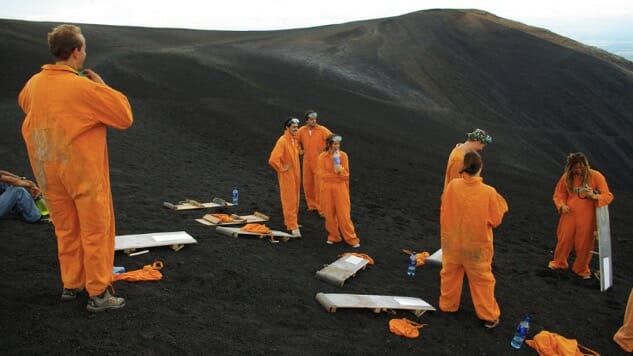deGeneration X: Board Down a Smoldering Black-Rock Volcano!

“This is gonna hurt,” I thought as I peered down the steep face of the Cerro Negro volcano. Marble-sized black lava rocks blanketed the volcanic terrain that sharply descends 2,382 feet from the peak to the base. With the smell of sulfur filling my nostrils, I sat on a small wooden sled teetering on the ledge preparing to race down at highway speeds. All I could think was, “This can’t be safe.”
A few days earlier, I arrived in León, Nicaragua after several hard days of drinking, including a costumed Halloween party, in its rival city Granada to the south. In terms of Nicaraguan politics, Granada is the more conservative city with more affluence and colonial architecture, while León is the more leftist city with such PETA night terrors as cock fights and iguana cooking classes. Though iguana probably tastes like chicken, my interests veered toward volcano trekking. Though more expensive, I connected with Quetzaltrekkers non-profit, volunteer-run trekking association in Nicaragua, Bolivia and Guatemala—since the proceeds from my adventures would benefit local children.
I booked a pair of two-day treks. On the first outing, I got to look down upon the bubbling lava of the Telica volcano. On the second trek, I conquered three volcanoes, which included swimming in a large crater lake and riding down the smoldering Cerro Negro.
-

-

-

-

-

-

-

-

-

-

-

-

-

-

-

-

-

-

-

-

-

-

-

-

-

-

-

-

-

-

-

-

-

-

-

-

-

-

-

-









































